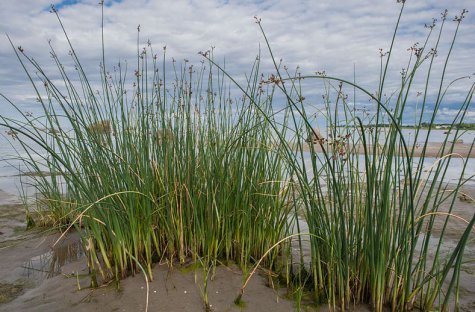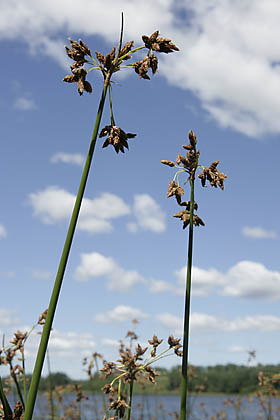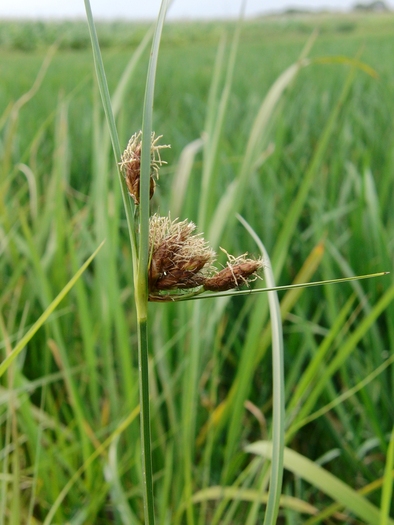Rushes and reeds
Photos Arne Ader
Translation Liis
Grey clubrush
Grey clubrush Kare kaisel or kare kõrkjas Schoenoplectus tabernaemontanii
Clubrush, Common clubrush Järvekaisel or järvekõrkjas Schoenoplectus lacustris
Why discuss the rushes of the coast and the inland lakes at the same time? Sometimes the plants grow together in a bay: towards the sea the lower and more narrow-leaved grey clubrush, towards land, in the bay, the higher common clubrush.
Both plants have stems without leaves. The stems are cylindrical and pith-filled, the spaces between cells are air-filled. In the tip we can see a many-branched inflorescence of little brown florets (the flowering is at its last stage). While the common clubrush grows to between one and two metres height the grey clubrush stays at less than a metre.
.
Common bullrush
On the shoreline, in shallow sea water or inner parts of small bays the only rush with glossy leaves in the Estonian flora grows – the saltmarsh bulrush (Scirpus maritima)
It grows in sparse stands, a perennial of up to ¾ of a metre in height. The stem is triangular, width of leaves up to 6 millimetres. The inflorescence consists of bunches of florets in the leaf axils, up to three of them, and on the north-western coast it grows nicely.
Saltmarsh bulrush, image from Wikipedia











